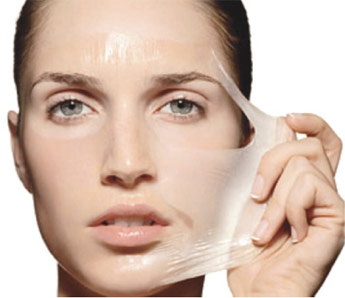Beauty Boy: The power of exfoliating
 CREDIT: BEDARLING.NET
CREDIT: BEDARLING.NETA peel is a popular form of a chemical exfoliator.
One of the key steps when it comes to skincare is exfoliating your skin. There are two types of exfoliators, and both have similar benefits: sloughing off dead skin cells, cleaning out pores and revealing a fresh surface of skin so that your skincare products absorb much better. A chemical exfoliator is a product that uses chemicals to disintegrate and dissolve dirt and dead skin, while a physical exfoliator uses beads or granules to manually scrub off dead skin.
A chemical exfoliator usually uses acids such as glycolic acid, salicylic acid and lactic acid. While this may seem daunting, the ingredients are proportioned properly so that they won't aggravate the skin. That being said, chemical exfoliators aren't the best for those who have really reactive skin or open sores on their face. Some really good chemical exfoliators are by Neostrata, Philosophy, Murad and Elizabeth Arden.
A physical exfoliator usually uses seeds from fruit or manufactured plastic beads that are perfectly round in shape, and both have pros and cons. Seeds are more eco-friendly and are also biodegradable, however they can be too abrasive (especially apricot seeds). Plastic beads are manufactured so perfectly that they can scrub out the pores very effectively, however, they are not biodegradable.
Some lesser quality scrubs have beads that are made too big and can't clean deep down into the pores. Some excellent physical exfoliators are by BioBeaute (organic), Clarins, Dior and Biotherm.
Exfoliating your skin not only helps clean your skin, but it also helps your makeup sit better. If you ever feel that your foundation is patchy or flaky, it is generally because you have dead skin on your face so the makeup will dry darker on those areas and also make the dead skin look more apparent. Exfoliating also allows your skincare to absorb much more effectively. No matter how expensive your skincare is, if you have a layer of dead skin on your face, the creams and serums can't penetrate through and will just sit on the surface.
A key reminder when it comes to exfoliating is to only do it two to three times a week, especially if you have sensitive or very oily skin. If you do it more than that, you will start to aggravate the skin, causing irritations as well as an overproduction of oil, which could result in a breakout. If it is your first time using an exfoliator, start with once a week and then progress to two or three times a week if necessary; you will really see a difference in your skin!













